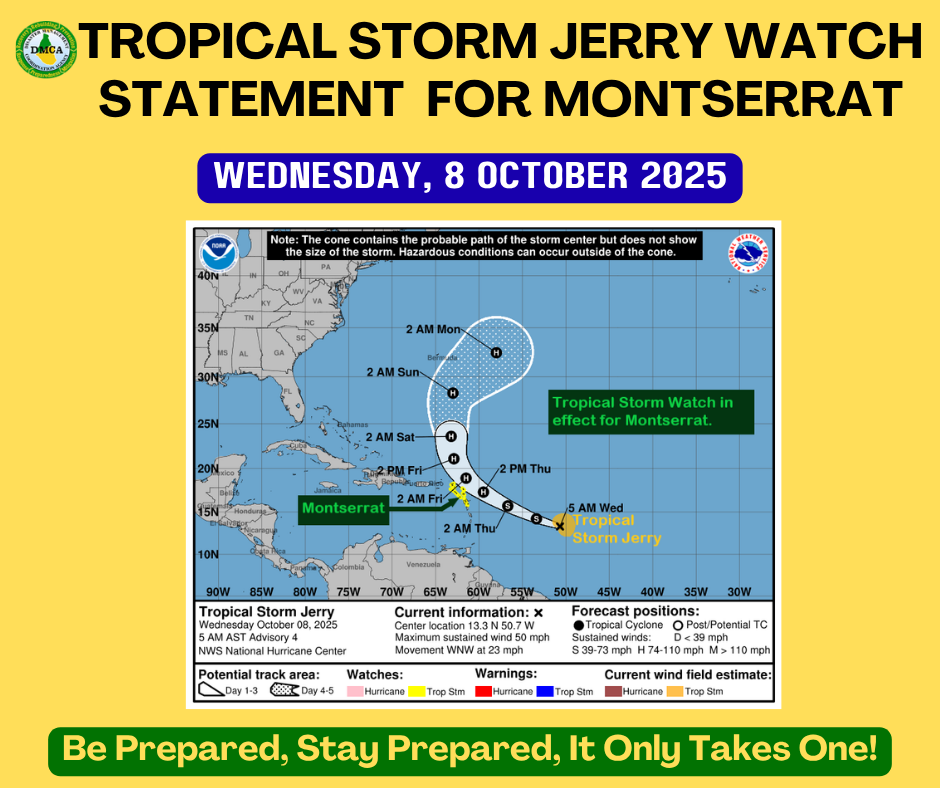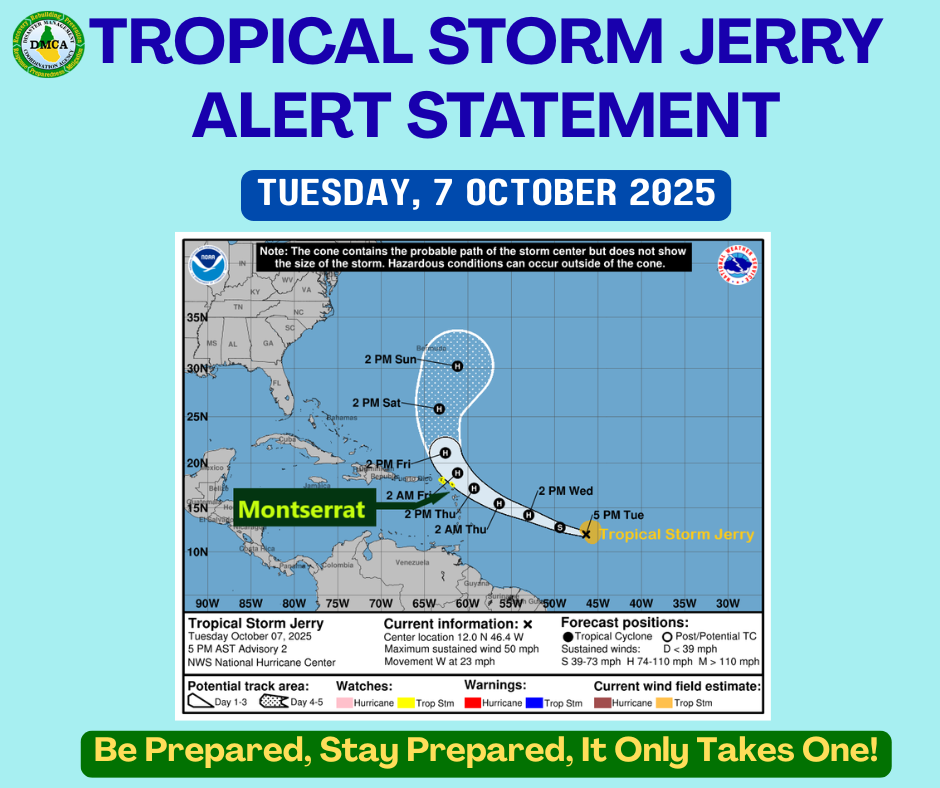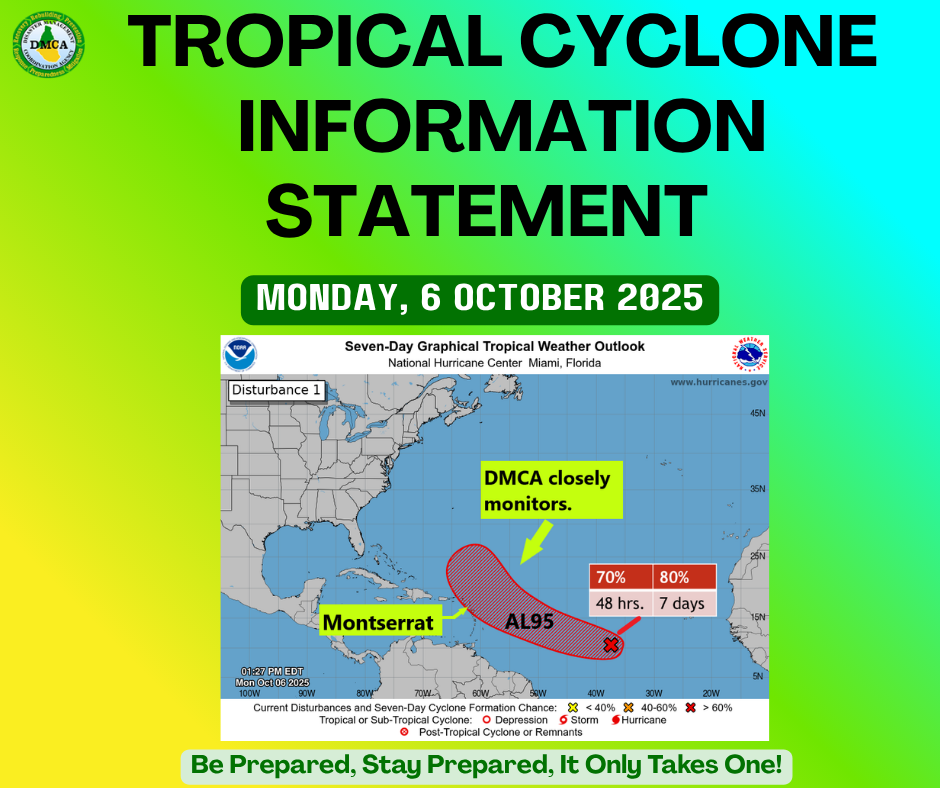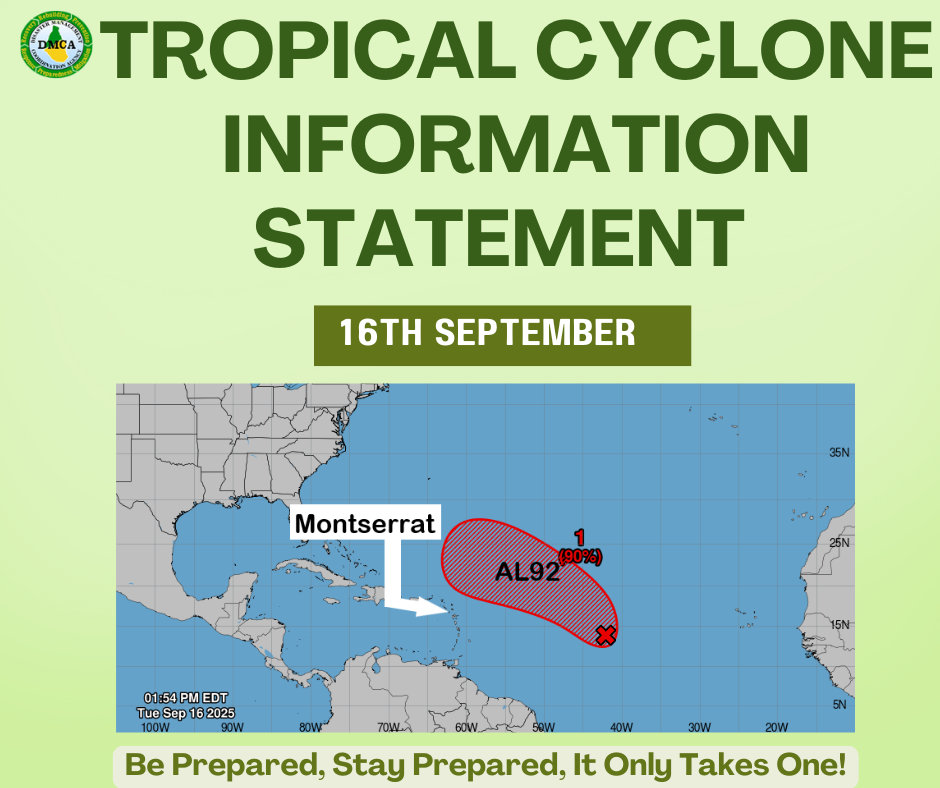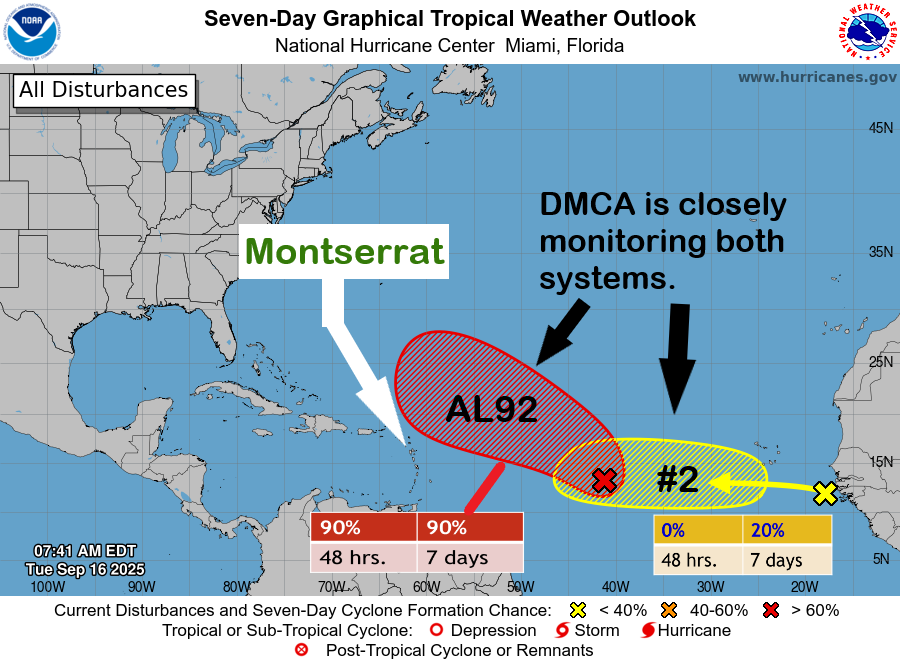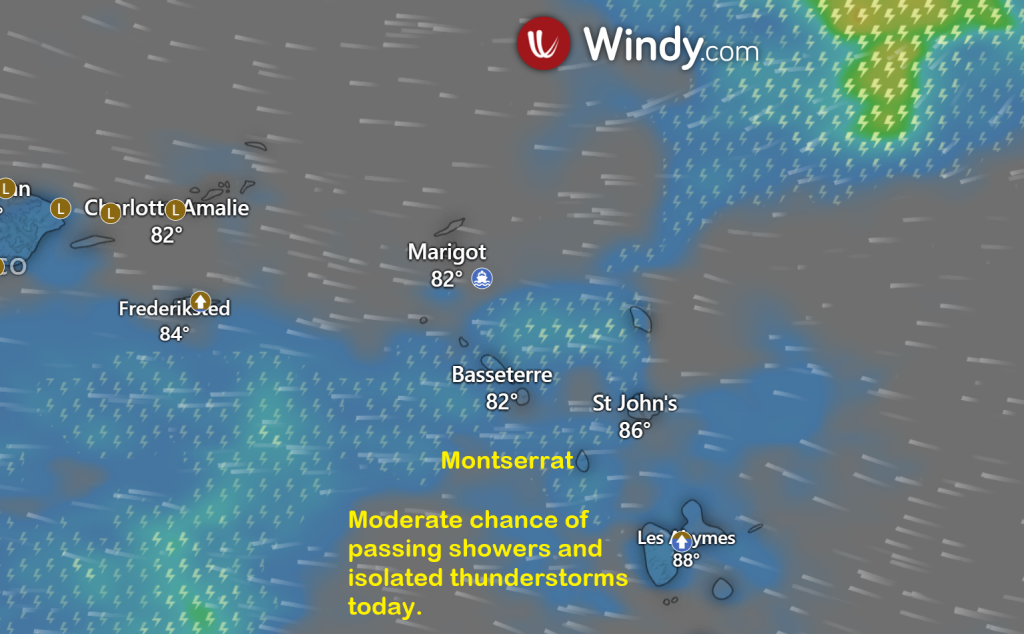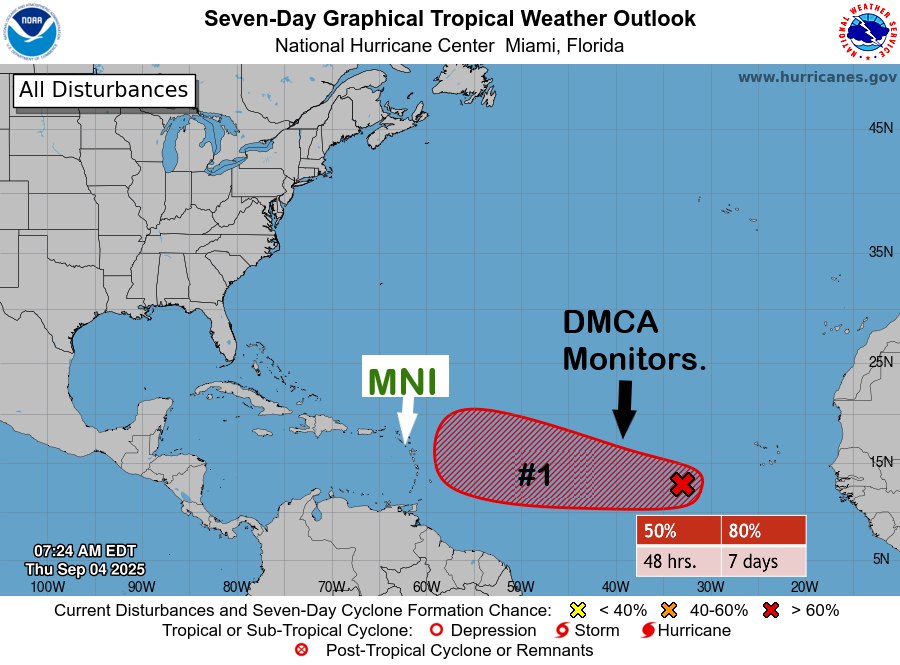ANTIGUA AND BARBUDA METEOROLOGICAL SERVICES
11:00 PM ECT | Tuesday, 7 October 2025
…TROPICAL STORM JERRY MOVING QUICKLY TOWARD THE ISLANDS…
A Tropical Storm Watch is now in effect for Montserrat.
A Tropical Storm Watch means that tropical-storm or developing tropical-storm conditions pose a possible threat to the specified area within 48 hours. Residents should begin to implement their hurricane preparedness plans.
At 11:00 PM ECT (0300 UTC), the centre of Tropical Storm Jerry was located near latitude 12.8° North, longitude 48.7° West, or about 1,030 miles (1,655 km) east-southeast of the northern Leeward Islands.
Jerry is moving toward the west-northwest near 23 mph (37 km/h). A decrease in forward speed and a turn toward the west-northwest are expected over the next couple of days.
Maximum sustained winds are 50 mph (85 km/h), with higher gusts. Little change in intensity is forecast tonight, but gradual strengthening is possible, and Jerry may become a hurricane within the next day or two.
Tropical-storm-force winds extend outward up to 140 miles (220 km) from the centre.
The estimated minimum central pressure is 1003 mb (29.62 inches).
Based on the latest observations and analysis, Jerry is projected to pass over or very near to the northern Leeward Islands late Thursday into Friday, possibly as a hurricane.
Jerry will be monitored closely, and information on potential impacts will be communicated as the system moves closer to the islands over the coming days.
?? All residents are urged to monitor the movement of Jerry closely and take action to protect life and property.
A Tropical Storm Warning is likely within the next 24 hours.
? Repeating the 11:00 PM ECT position:
Location: 12.8° N, 48.7° W
Movement: West-northwest near 23 mph (37 km/h)
Maximum sustained winds: 50 mph (85 km/h)
Minimum central pressure: 1003 mb (29.62 inches)
The next advisory will be issued at 5:00 AM ECT.
Forecaster: Trecy Spencer-Lake
